Apollonia hides more than just an ancient city! The Monastery of St. Mary is an extraordinary jewel of cultural and historical significance!
Albania is a country rich in archaeological sites that testify to its long and diverse history. Among the most significant sites is Apollonia, an ancient city located near present-day Fier, which provides insight into the region’s ancient past.
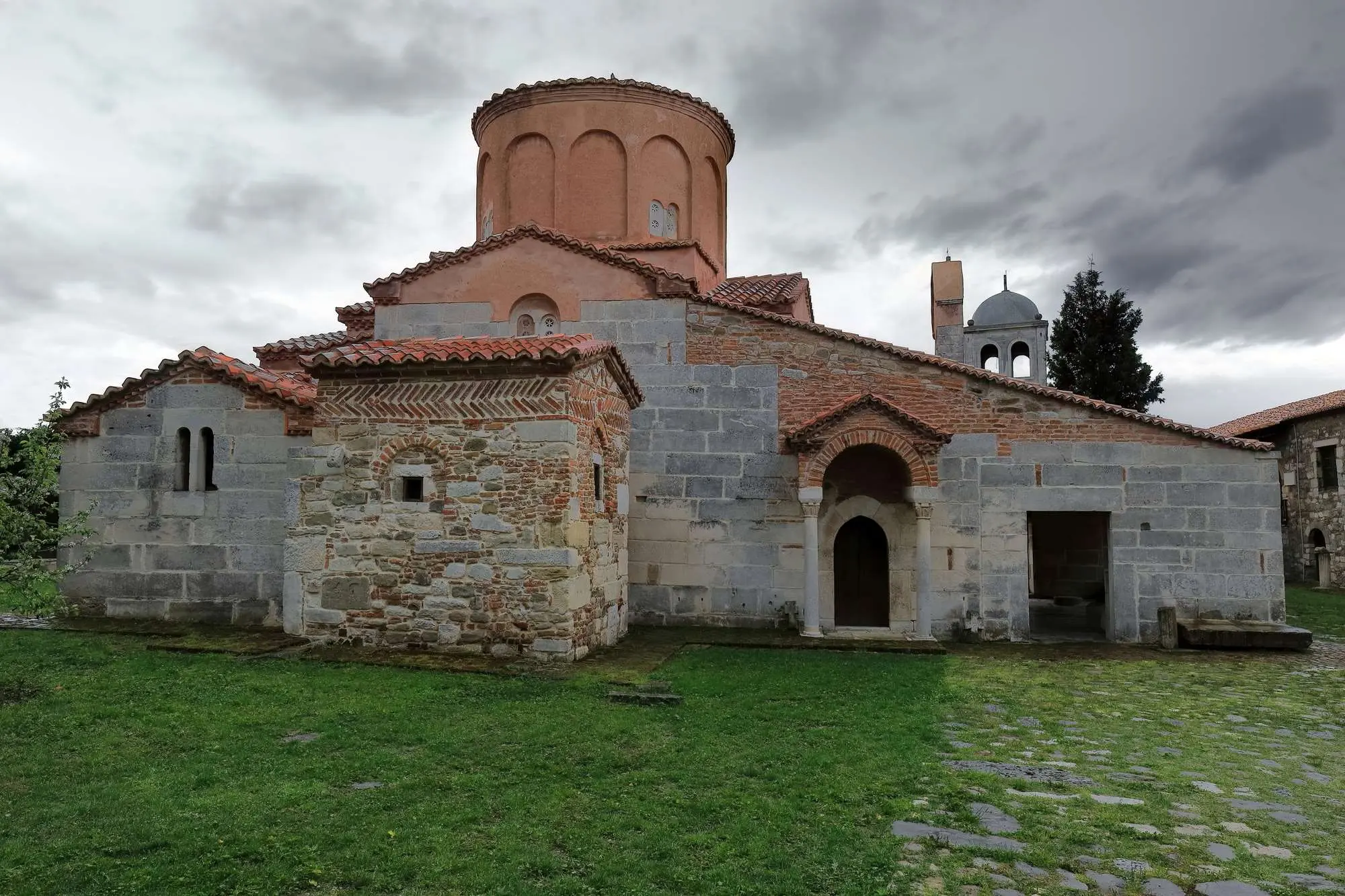
Monastery of St. Mary of Apollonia, Photo: rweisswald Depositphotos
Apollonia was founded around 620 BC by Greek colonists from Corinth, who found the region fertile ground for trade and cultural exchange. Situated on the Vjosa river, which was navigable all the way to the Adriatic Sea at the time, Apollonia quickly grew into one of the most important centers of ancient Illyria. Its strategic location ensured the city’s role as a key port and trade hub, while the rich agricultural areas in its surroundings further contributed to its development.
In addition to its economic importance, Apollonia was also a cultural and religious center. The city was named after the Greek god Apollo, whose worship was strongly present in the area. During its heyday, Apollonia was home to many philosophers, poets, and artists, and its educational influence extended far beyond the borders of Illyria.
Today, Apollonia is recognized as a national archaeological park due to the wealth of architectural remains that testify to its past, and one of the most impressive parts of the archaeological park is certainly the Monastery of St. Mary, located within the complex itself. This medieval church, dating back to the 13th century, with its blend of Byzantine and Romanesque architecture, represents an invaluable part of cultural heritage. The monastery harmoniously fits into the ancient environment, which makes it a unique witness to the connection of different historical periods.

Monastery of St. Mary of Apollonia, Photo: rweisswald Depositphotos
The Monastery of St. Mary was built on the foundations of the ancient city of Apollonia, using architectural elements from that period. The lower part of the monastery was built with stones from the city’s ancient theater, while the upper part was built of bricks covered with red plaster during a later reconstruction.
The church’s ground plan follows the shape of an inscribed cross with a dome, which is characteristic of Byzantine architecture. The monastery’s exonarthex, with its eight octagonal columns, is decorated with capitals depicting mythological creatures such as mermaids and monstrous birds. This detailed artistic treatment makes the church unique not only in Albania but also in the wider Balkan region.
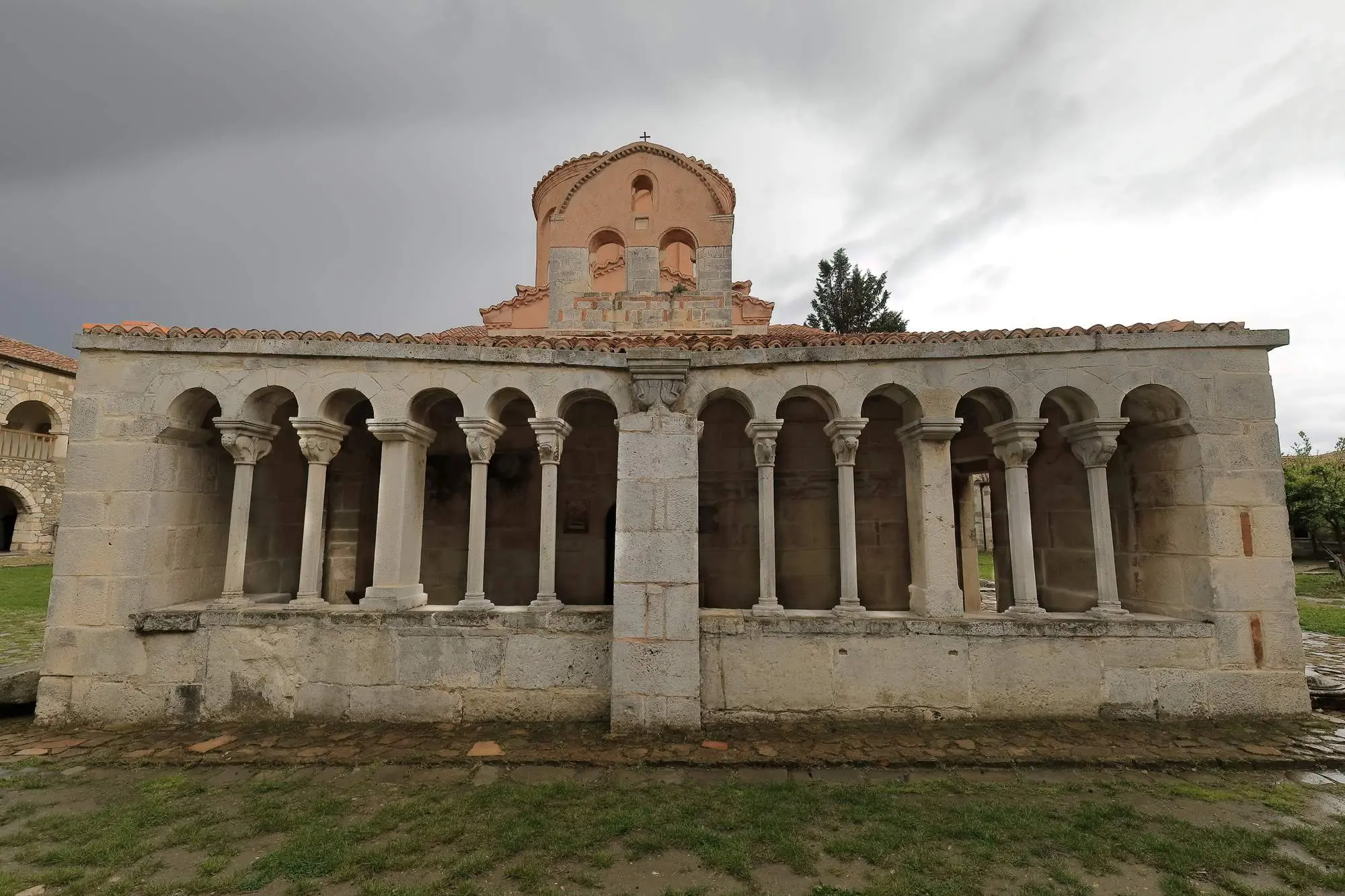
Monastery of St. Mary of Apollonia, Photo: rweisswald Depositphotos
The interior of the church was once richly decorated with frescoes, some of which have survived to this day. One of the most interesting frescoes is located on the west wall of the church and depicts the Byzantine family of Emperor Michael VIII Palaiologos, the Empress, and their son Andronikos II. This fresco is unique in Byzantine art because it depicts the two emperors together.
Of particular note is a fragment of the fresco in which Emperor Michael VIII offers a model of the church to Saint Mary, suggesting that the monastery was rebuilt at his behest in the late 13th century. The frescoes below this depiction further indicate that the church dates back to an even earlier period, confirming its historical and cultural importance.
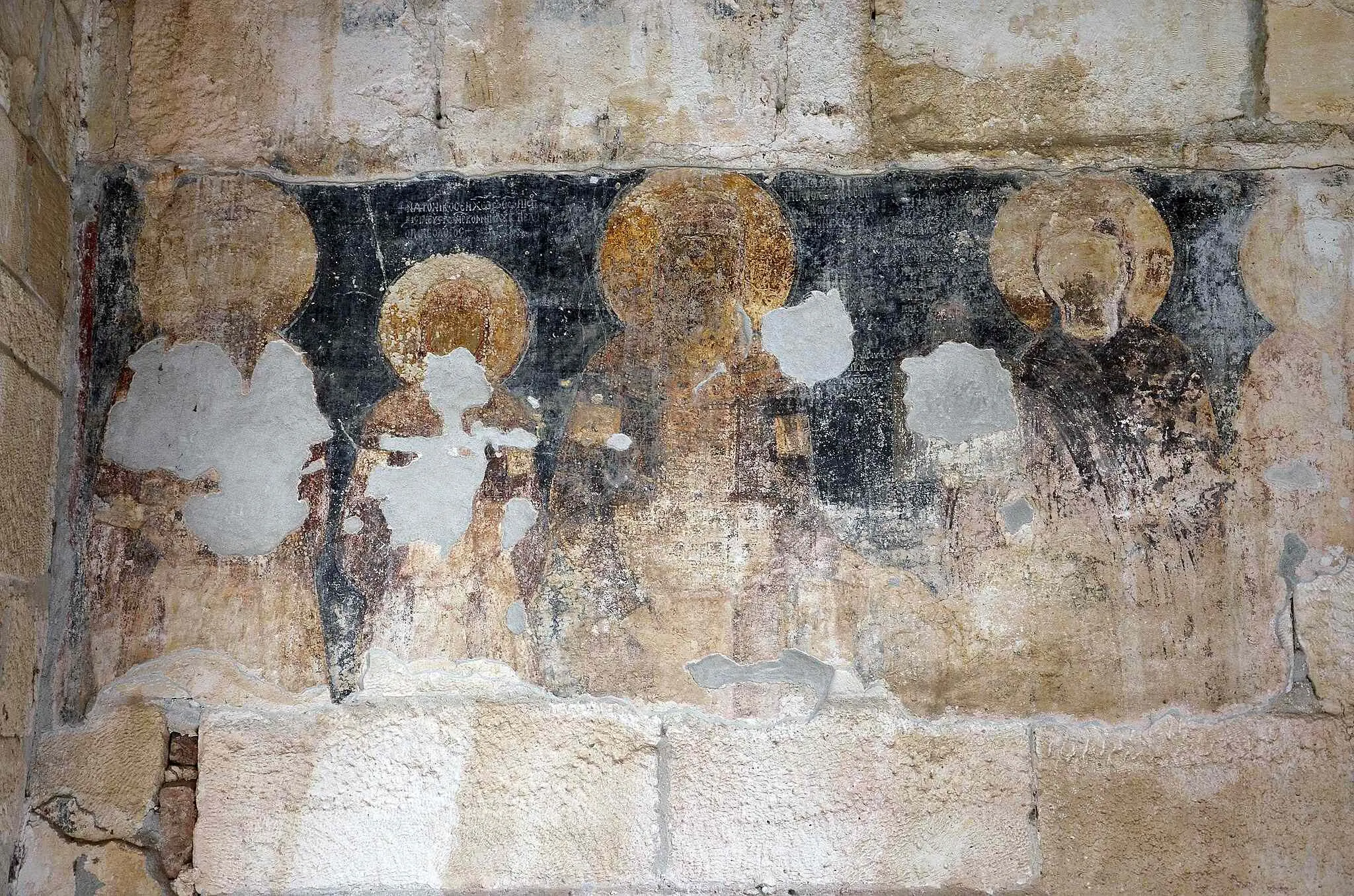
Monastery of Saint Mary of Apollonia, Photo: Pasztilla aka Attila Terbócs, CC BY-SA 4.0
Today, the monastery grounds have been converted into an archaeological museum, preserving their timeless beauty for modern visitors. I invite you to explore Apollonia and the Monastery of St. Mary and discover this archaeological park’s rich cultural heritage!
Find out more…
The ancient city of Apollonia was the place where the Roman emperor Augustus studied philosophy!

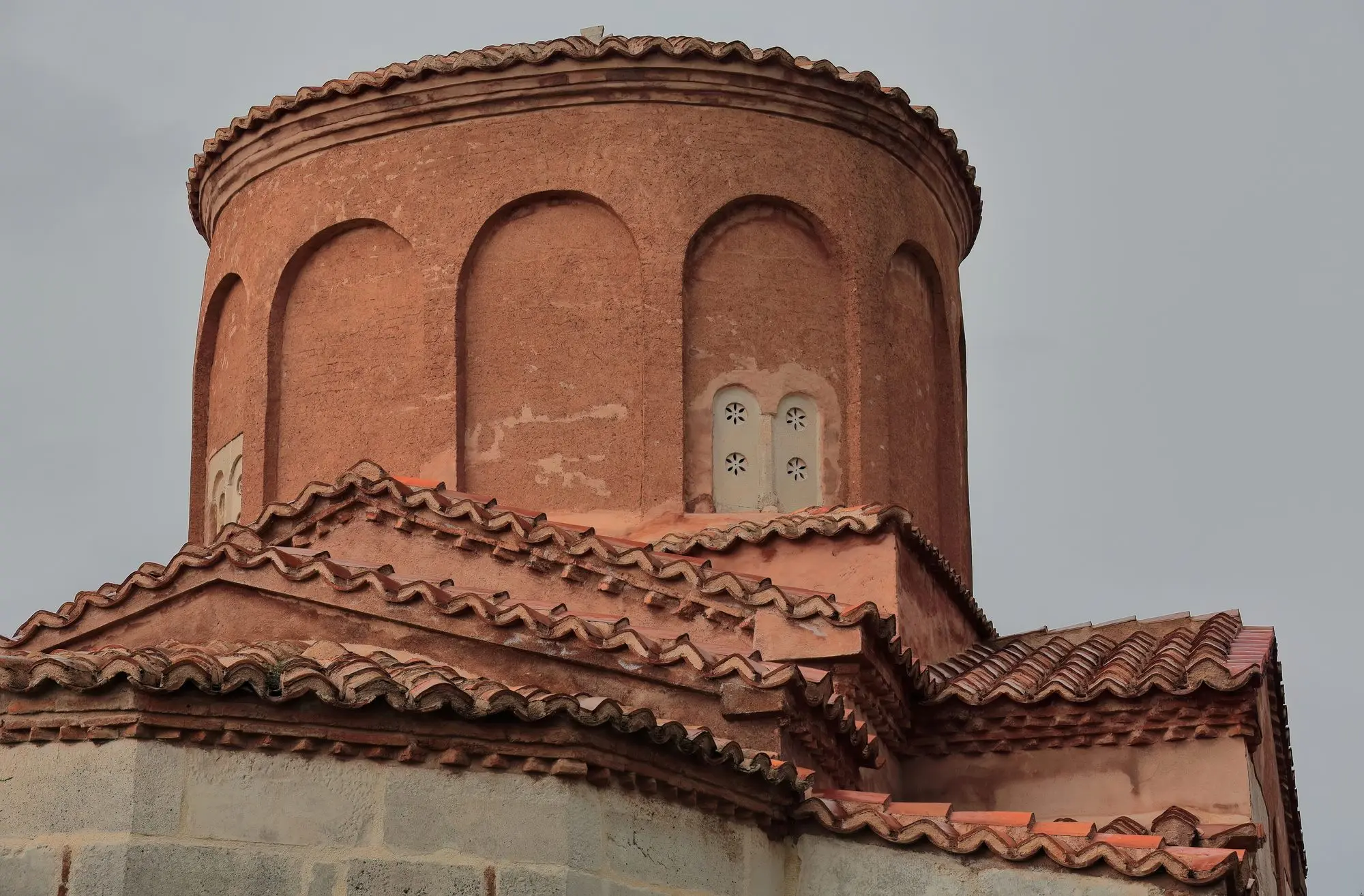

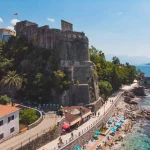
Leave a Reply